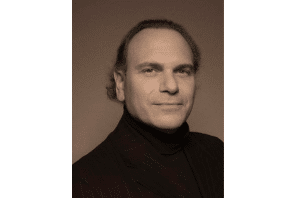Interesting article
Tomaro’s skills in forensic musicology sought out by law firms
f you know any rap artists who are plagiarizing beats or lyrics, Beloit Janesville Symphony Orchestra (BJSO) Music Director Rob Tomaro might be writing a report on them. While he’s best known for conducting in Rock County, Tomaro’s professional skills are in high demand across the country for his work in forensic musicology.
“I perform the function of being an expert witness and providing reports on legal matters that involve plagiarism in the music industry,” Tomaro said. “As a composer, and especially as a conductor, I’ve been trained over many years by great teachers to discern minute differences in sound and pitch. You have to hear if players are out of tune.”
Tomaro’s skills are sought when musicians allege another artist has appropriated their musical product and it is being litigated. Musical plagiarism is most prevalent in pop, rock, rap and hip hop.
Tomaro can find minute differences in inflections, breaths and pitch the naked ear cannot hear and substantiates his findings using a scientific method employing four to five methods of analysis. His skills are in high demand as there aren’t a high number of forensic musicologists.
“It seems to require two completely disparate skill sets that have to work together. You have to have a thorough understanding of how to analyze and describe harmonic analysis in classical music. You also have to understand the latest trends in contemporary music including what happens in a recording studio and the latest techniques in digital signal processing,” he said.
During Tomaro’s doctoral studies in the 1990s, he studied musicology in addition to his primary focus of music composition and conducting, but he didn’t start developing his career as a forensic musicologist until about five years ago when he received a phone call from a colleague in Los Angeles affiliated with law firms specializing in music lawsuits.
Tomaro explained how music plagiarism is quite common in the Los Angeles music scene. One well known case for example, is when musicians sued Led Zeppelin in 2014 when they claimed “Stairway to Heaven” included material they had originally written. Zeppelin later won the copyright battle.
“Such lawsuits are increasing quite a bit. There is a tremendous amount of fluidity in pop, hip hop and rap when pieces are borrowed, especially due to the explosion in digital music technology. You can literally press a button and copy and paste something from someone else’s music, slightly alter it and put it in your music claiming it as your own,” Tomaro said.
Sometimes, Tomaro explained, there can be unconscious plagiarism such as when George Harrison used a melody from another tune in his hit song “My Sweet Lord” without knowing what he was doing. He was sued for copyright infringement by the publisher of “He’s So Fine,” a 1963 hit. Harrison was found guilty of “subconscious plagiarism” and had to pay more than $1 million.
“It was a pretty expensive mistake,” Tomaro said.
However, Tomaro said typically plagiarism is a conscious choice that happens more often than one would think.
“People think they can get away with it,” Tomaro said.
Tomaro said he’s currently working on a case in which an artist claims a world-famous singer stole a vocal track of hers and is lip synching to it in a video that has 23 million views on YouTube.
“I can’t name the artist because I’m in a non disclosure agreement,” he noted.
Tomaro is involved in his eighth case now.
“I’ve come out on the winning side, let’s just say, 70% of the time,” he said.
By the time a case reaches Tomaro’s desk, it’s already been vetted to determine there are significant questions regarding the work. Tomaro must then provide an expert report using various methodologies.
One of the more interesting techniques is employing the service of a voice analyst expert, usually an ex FBI person, who will use digital imaging to create a spectrogram, a visual representation of the peaks of valleys of sound.
“You can identify where one sound is the same as the other or if they are different and why. It’s like a digital version of what fingerprinting is in crime,” he said.
Tomaro said he’s never come across a case where there is one strong similarity that shows the music was appropriated. He usually needs five or six similarities to have a strong case.
One time Tomaro recalled employing the use of an expert in information technology to help when a defendant said some musical similarities happened by coincidence. The expert put the similarities in an algorithm and the odds of the five similarities occurring were .00000001.
“It was very impressive at the time,” Tomaro said.
Tomaro can also use a timeline analysis. He recalled one case where he listened to his client’s and the defendant’s song. By using a timeline he learned that not only did the defendant copy the song, but also the arrangement.
Tomaro has a diverse array of clients. He represented a recording engineer alleging a recording company used a mix he created which the company said they were turning down. Another time, Tomaro had to analyze two ‘whistling sounds’ when someone alleged a major corporation used their whistle in an ad campaign.
“I did a spectrographic analysis of the whistle and analyzed the peaks and valleys on the spectrogram,” Tomaro said.
Tomaro said his work is not likely to slow down. There is a lot of gray area to navigate in regards to similar melodies, beat progression and lyrics. However, the music industry isn’t the only business with copycats. Reproductions are everywhere, he said, just like Fig Newtons and the other fig cookie knockoffs that seek to be them.
“If someone gets a hit, a lot of people jump on the bandwagon and try to produce something as close to it as possible to make money off it,” he said.




